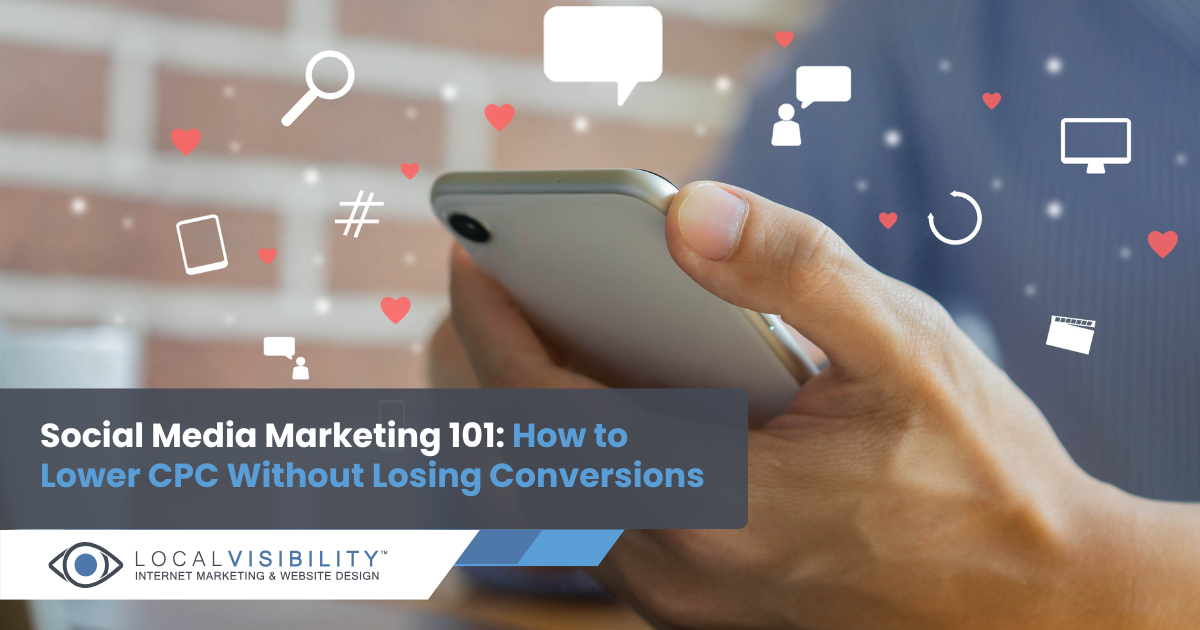Social Media Marketing 101: How to Lower CPC Without Losing Conversions

I’ve run ads that absolutely crushed it. I’ve also launched campaigns that made me question my life choices. But if there’s one thing I’ve learned from managing social media marketing on a tight budget, it’s this: a low cost-per-click (CPC) doesn’t mean much if your conversions go with it.
Social platforms are full of shiny promises and fluctuating metrics, but underneath all that noise is a formula for CPC that can truly work—if you’re willing to work at it. CPC is one of those metrics that can quietly bleed your budget if you’re not careful. And yet, when you do get it right? There’s almost nothing more satisfying than watching your CPC drop while your conversions hold strong (or climb). Here’s what’s helped me do exactly that:
- Understanding CPC and conversion metrics
- The common pitfalls that increase CPC
- Strategies to lower CPC without sacrificing conversions
- Budget allocation and bid strategy tips
- Tracking and measuring success
Want results that stick? Keep reading for the backend tips—budget tweaks, tracking metrics, and smart strategy shifts that make everything above actually work.
Understanding CPC and Conversion Metrics
CPC, or “cost-per-click,” is the amount you pay for each click on your ad. It's a fundamental component of pay-per-click (PPC) advertising. However, it's essential to distinguish between CPC and Cost Per Acquisition (CPA), which measures the cost of acquiring a customer.
Something interesting I learned is that a high CPC doesn't necessarily equate to better results. It's about the quality of the clicks and how well they convert. I've personally found that focusing solely on CPC can be misleading; it's the balance between cost and conversion that truly matters.
The Common Pitfalls That Increase CPC
Over time, I've identified several common mistakes that can inadvertently drive up CPC:
- Bidding Wars Over Competitive Keywords: Targeting highly competitive keywords can lead to inflated CPCs without guaranteeing conversions.
- Poor Quality Scores From Google Ads: Low-quality scores due to irrelevant ad copy or landing pages can increase CPC.
- Irrelevant Landing Pages or Ads: If your ad doesn't align with the landing page, users may bounce, and CPC can rise.
- Broad Targeting: Casting too wide a net can attract unqualified clicks, increasing costs without conversions.
Strategies to Lower CPC Without Sacrificing Conversions
Trial and error taught me this: lowering CPC doesn't mean lowering your standards. These are the moves that helped me keep costs down and conversions high:
- Refine Keyword Targeting: Not all keywords deserve your dollars. Long-tail phrases tend to pull in more qualified leads, and negative keywords act like your digital bouncer—keeping out the traffic you don’t want. I check performance regularly to make sure my terms are still doing their job.
- Improve Quality Score: Relevance isn’t optional—it’s everything. The tighter your ad copy aligns with what someone’s searching for, the less you’ll end up paying per click. I’ve had surprising wins just by rewriting headlines and tweaking landing page content.
- Enhance Ad Relevance and Extensions: Responsive Search Ads (RSAs) have saved me countless hours, and they’re surprisingly good at figuring out what lands. Extensions like sitelinks and callouts? They boost visibility and give people more reasons to click.
- Geo and Device Targeting Adjustments: One-size-fits-all bidding is, essentially, throwing money away. Some cities and devices convert way better than others—so I let the data steer the spend. Those little adjustments have made a big difference.
- Optimize Landing Pages for Conversions: The click means nothing if the landing page kills momentum. I’ve learned to match the message, speed up the load time, and make the CTA stupid-easy to follow. Bonus points for mobile-friendly design and credibility cues like reviews or guarantees.
Budget Allocation and Bid Strategy Tips
Budget mismanagement is your fast track to inflated CPCs and wasted spend. I’ve learned (always the hard way) that where and how you allocate your budget can make or break your campaign performance. Learn from my mistakes and embrace these tips:
- Give More Love to Top Performers: Shifting spend toward high-performing campaigns isn’t just smart—it’s essential. These are the campaigns pulling their weight, so why not fuel what’s already working?
- Let Smart Bidding Do the Heavy Lifting: Target CPA or Maximize Conversions can take a lot of guesswork off your plate. These automated strategies respond to real-time data, so your bids adapt without you constantly watching.
- Drop Bids Gradually, Not Drastically: Testing lower bids in small increments helps you land on that just-right cost threshold. No need to tank your traffic just to save a few bucks.
Tracking and Measuring Success
If you're not measuring, you’re just guessing. From my experience, that means wasted money. Here’s how I keep performance crystal clear:
KPIs to Watch
- Click-Through Rate (CTR): How compelling is your ad? This metric tells you if people are actually clicking.
- Cost-Per-Click (CPC): A direct look at how much you’re spending to get each visitor.
- Quality Score: Google’s behind-the-scenes grade on your keywords, ads, and landing pages. High scores mean a lower CPC.
- Conversion Rate: The number that shows if your traffic is turning into results.
- Return on Ad Spend (ROAS): The big picture metric that tells you if the dollars going out are bringing enough back in.
Tools to Use
Google Ads Dashboard: The control room for managing bids, testing ads, and seeing results in real-time.
Google Analytics (GA4): My go-to for understanding how users behave after they click.
Third-Party PPC Tools: Platforms like SEMrush and Ahrefs help me uncover hidden patterns, audit issues, and forecast performance.
Conclusion
Think CPC is a mystery or a money pit? When you pair smart keyword choices with sharp creative, audience precision, and a landing page that actually converts, you’re in control. Social media marketing moves fast, but staying curious, testing constantly, and knowing where your money’s going? That’s how you win—click by click, conversion by conversion.
